Rank Species | Higher classification Rhubarb | |
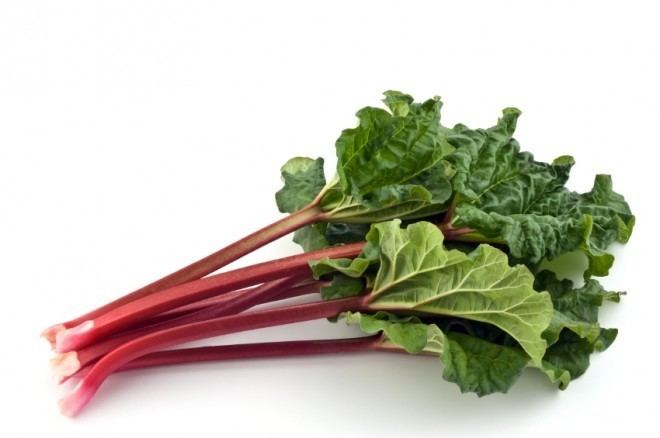 | ||
Similar Sugar, Crumble, Rhubarb pie, Beetroot, Compote | ||
How to plant rhubarb
Rhubarb (Rheum rhabarbarum) is a species of plant in the family Polygonaceae. It is a herbaceous perennial growing from short, thick rhizomes. It produces large poisonous leaves that are somewhat triangular, with long fleshy edible stalks and small flowers grouped in large compound leafy greenish-white to rose-red inflorescences.
Contents
- How to plant rhubarb
- How to grow rhubarb from seed for productive plants
- Cultivation
- Historical cultivation
- Uses
- Food
- Medicine
- Chemistry
- Toxicity
- Pests
- References
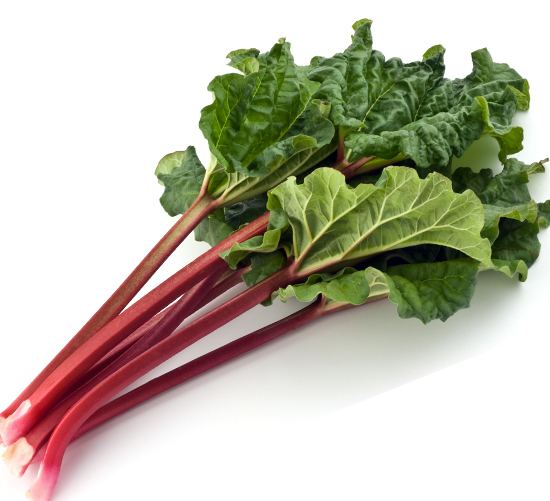
In culinary use, fresh raw leaf stalks (petioles) are crisp (similar to celery) with a strong, tart taste. Although rhubarb is not a true fruit, in the kitchen it is usually prepared as if it were. Most commonly, the stalks are cooked with sugar and used in pies, crumbles and other desserts. A number of varieties have been domesticated for human consumption, most of which are recognised as Rheum x hybridum by the Royal Horticultural Society.

Rhubarb contains anthraquinones including rhein, and emodin and their glycosides (e.g. glucorhein), which impart cathartic and laxative properties. It is hence useful as a cathartic in case of constipation.
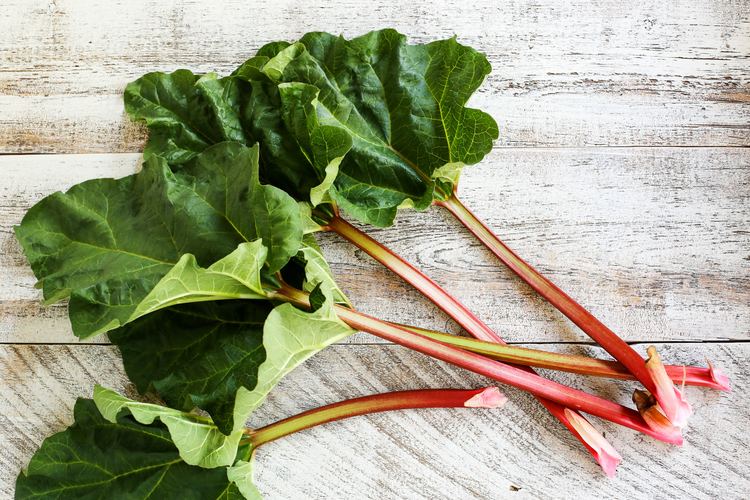
How to grow rhubarb from seed for productive plants
Cultivation
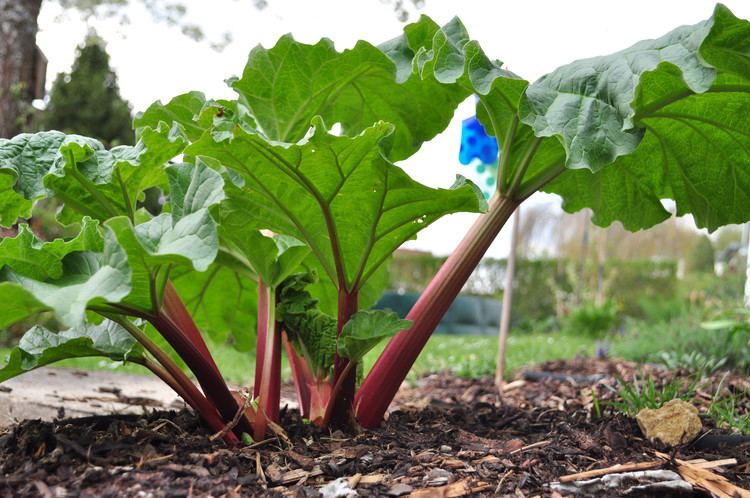
Rhubarb is grown widely, and with greenhouse production it is available throughout much of the year. Rhubarb grown in hothouses (heated greenhouses) is called "hothouse rhubarb", and is typically made available at consumer markets in early spring, before outdoor cultivated rhubarb is available. Hothouse rhubarb is usually brighter red, more tender and sweeter-tasting than outdoors rhubarb. In temperate climates, rhubarb is one of the first food plants harvested, usually in mid- to late spring (April/May in the Northern Hemisphere, October/November in the Southern Hemisphere), and the season for field-grown plants lasts until September. In the northwestern US states of Oregon and Washington, there are typically two harvests, from late April to May and from late June into July. Rhubarb is ready to consume as soon as harvested, and freshly cut stalks are firm and glossy.
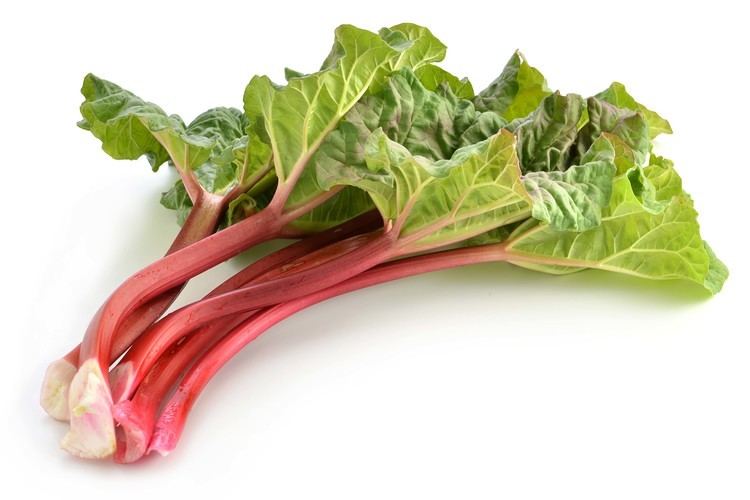
In the United Kingdom, the first rhubarb of the year is harvested by candlelight in forcing sheds where all other light is excluded – a practice that produces a sweeter, more tender stalk. These sheds are dotted around the noted "Rhubarb Triangle" of Wakefield, Leeds, and Morley.
The advocate of organic gardening Lawrence D Hills lists his favorite rhubarb varieties for flavor as Hawke's Champagne, Victoria, Timperley Early, and Early Albert, also recommending Gaskin's Perpetual for having the lowest level of oxalic acid, allowing it to be harvested over a much longer period of the growing season without developing excessive sourness.
Because rhubarb is a seasonal plant, obtaining fresh rhubarb out of season is difficult in colder climates, such as in the UK, Ireland, Russia, etc. Rhubarb thrives in areas of direct sunlight and can successfully be planted in containers if they are large enough to accommodate a season's growth.
Rhubarb damaged by severe cold should not be eaten, as it may be high in oxalic acid, which migrates from the leaves and can cause illness.
The color of rhubarb stalks can vary from the commonly associated crimson red, through speckled light pink, to simply light green. Rhubarb stalks are poetically described as "crimson stalks". The color results from the presence of anthocyanins, and varies according to both rhubarb variety and production technique. The color is not related to its suitability for cooking: The green-stalked rhubarb is more robust and has a higher yield, but the red-coloured stalks are much more popular with consumers.
Historical cultivation
Rhubarb root has been used for medical purposes by the Chinese for thousands of years, and appears in The Divine Farmer's Herb-Root Classic which is thought to have been compiled about 2,700 years ago. Though Dioscurides' description of ρηον or ρά indicates that a medicinal root brought to Greece from beyond the Bosphorus may have been rhubarb, commerce in the drug did not become securely established until Islamic times. During Islamic times, it was imported along the Silk Road, reaching Europe in the 14th century through the ports of Aleppo and Smyrna, where it became known as "Turkish rhubarb". Later, it started arriving also via other via the new maritime routes or overland through Russia. The "Russian rhubarb" was the most valued, probably because of the rhubarb-specific quality control system maintained by the Russian Empire.
The cost of transportation across Asia made rhubarb expensive in medieval Europe. It was several times the price of other valuable herbs and spices such as cinnamon, opium, and saffron. The merchant explorer Marco Polo therefore searched for the place where the plant was grown and harvested, discovering that it was cultivated in the mountains of Tangut province. The value of rhubarb can be seen in Ruy Gonzáles de Clavijo's report of his embassy in 1403–05 to Timur in Samarkand: "The best of all merchandise coming to Samarkand was from China: especially silks, satins, musk, rubies, diamonds, pearls, and rhubarb..."
The high price as well as the increasing demand from apothecaries stimulated efforts to cultivate the plant on European soil. These were unsuccessful in producing rhubarb root with the necessary medicinal qualities, but the variety then grown in Russia became the ancestor of the common modern rhubarb. The availability of this "Siberian rhubarb", together with the increasing abundance and decreasing price of sugar in the 18th century, galvanised its culinary adoption.
The term "rhubarb" is a combination of the Ancient Greek rha and barbarum; rha refers both to the plant and to the River Volga. For centuries, the plant has grown wild along the banks of the River Volga, for which the ancient Scythian hydronym was Rhā.
Though it is often asserted that rhubarb first came to the United States in the 1820s, John Bartram was growing medicinal and culinary rhubarbs in Philadelphia from the 1730s, planting seeds sent him by Peter Collinson. From the first, the familiar garden rhubarb was not the only Rheum in American gardens: Thomas Jefferson planted R. undulatum at Monticello in 1809 and 1811, observing that it was "Esculent rhubarb, the leaves excellent as Spinach."
Uses
Rhubarb is grown primarily for its fleshy stalks, technically known as petioles. The use of rhubarb stalks as food is a relatively recent innovation. This usage was first recorded in 17th-century England after affordable sugar became available to common people, and reached a peak between the 20th century's two world wars.
Commonly, it is stewed with sugar or used in pies and desserts, but it can also be put into savory dishes or pickled. Rhubarb can be dehydrated and infused with fruit juice. In most cases, it is infused with strawberry juice to mimic the popular strawberry rhubarb pie.
Rhubarb root produces a rich brown dye similar to walnut husks. It is used in northern regions where walnut trees do not survive.
Rhubarb leaves can be used in honey bee colonies as a mild Varroa-cide, either as crushed leaves or in the form of a tea. Rhubarb tea soaked paper towels/shop towels or crushed leaves are placed above the broodnest. Worker bees immediately begin removing this foreign substance, exposing the colony to oxalic acid in the process. Oxalic acid is toxic to Varroa mites, and mite drops increase while these rhubarb remedies are on the hive.
Food
For cooking, the stalks are often cut into small pieces and stewed (boiled in water) with added sugar, until soft. Little water is added, as rhubarb stalks already contain a great deal of water. Rhubarb should be processed and stored in containers which are unaffected by residual acid content, such as glass or stainless steel. Spices such as cinnamon, nutmeg, and ginger are sometimes added. Stewed rhubarb or rhubarb sauce, like applesauce, is usually eaten cold. Pectin, or sugar with pectin, can be added to the mixture to make jams.
A similar preparation, thickened with cornstarch or flour, is used as filling for rhubarb pie, tarts, and crumbles, leading to the nickname "pie plant", by which it is referred to in many 19th-century cookbooks, as well as by American author Laura Ingalls Wilder in her short novel The First Four Years. The term "pie plant" is still used regionally in the U.S.
In recent times rhubarb has often been paired with strawberries to make strawberry-rhubarb pie, though some rhubarb purists jokingly consider this "a rather unhappy marriage".
In former days, a common and affordable sweet for children in parts of the United Kingdom and Sweden was a tender stick of rhubarb, dipped in sugar. It is still eaten this way in western Finland, Norway, Iceland and sometimes Sweden, and some other parts of the world. In Chile, Chilean rhubarb, which is only very distantly related, is sold on the street with salt or dried chili pepper, not sugar.
Rhubarb can be used to make a fruit wine or sima. It is also used to make compote. Being a bit sour, it is very refreshing and can be drunk cold, especially during the summer.
Medicine
In traditional Chinese medicine, rhubarb roots have been used as a laxative for several millennia. Rhubarb also appears in medieval Arabic and European prescriptions. It was one of the first Chinese medicines to be imported to the West from China.
A pigment found in rhubarb called parietin, has been identified from an FDA database of 2,000 known suppressors of 6PGD, to have killed half the human leukemia cells over two days in the laboratory. The pigment also slowed the growth of other human cancer cells in mouse models. A more-potent derivative of the parietin called S3 may even cut the growth of lung cancer cells implanted in mice by two-thirds, over the course of 11 days.
Chemistry
The roots and stems are rich in anthraquinones, such as emodin and rhein. These substances are cathartic and laxative, explaining the sporadic use of rhubarb as a dieting aid. The anthraquinone compounds have been separated from powdered rhubarb root for medicinal purposes.
The rhizomes contain stilbenoid compounds (including rhaponticin), which seem to lower blood glucose levels in diabetic mice.
Rhubarb also contains the flavanol glucosides (+)-catechin-5-O-glucoside and (−)-catechin-7-O-glucoside.
Rhubarb contains carbon-based quinone molecules which are capable of carrying an electrical charge. In 2014 a Harvard-based team of scientists published results describing the use of the quinone AQDS, almost identical to a form found in rhubarb, in flow-batteries.
Toxicity
Rhubarb leaves contain poisonous substances, including oxalic acid, which is a nephrotoxic and corrosive acid that is present in many plants. Humans have been poisoned after ingesting the leaves, a particular problem during World War I when the leaves were mistakenly recommended as a food source in Britain. The toxic rhubarb leaves have been used in flavoring extracts, after the oxalic acid is removed by treatment with precipitated chalk. Oxalic acid can also be found in the stalks of rhubarb, but the levels are too low to cause any bodily harm.
The LD50 (median lethal dose) for pure oxalic acid in rats is about 375 mg/kg body weight, or about 25 grams for a 65-kilogram (143 lb) human. Other sources give a much higher oral LDLo (lowest published lethal dose) of 600 mg/kg. While the oxalic acid content of rhubarb leaves can vary, a typical value is about 0.5%, so a rather unlikely 5 kg (for a 70 kg human) of the extremely sour leaves would have to be consumed to reach the LD50 of oxalic acid. Cooking the leaves with soda can make them more poisonous by producing soluble oxalates. However, the leaves are believed to also contain an additional, unidentified toxin, which might be an anthraquinone glycoside (also known as senna glycosides).
In the petioles (stalks), the proportion of oxalic acid is much lower, only about 2–2.5% of the total acidity, which consists mostly of malic acid.
Pests
The rhubarb curculio, Lixus concavus, is a weevil. Rhubarb is a host, damage being visible mainly on the leaves and stalks, with gummosis, and oval or circular feeding and/or egg-laying sites.
Hungry wildlife may dig up and eat rhubarb roots in the spring, as stored starches are turned to sugars for new foliage growth.
